Last updated on January 17th, 2023 at 02:44 pm
It is only natural we strive to find ways to spend more time with our dogs. And it is common, however, for dogs to get excited in ways that make running with them difficult. Some dogs pull hard or lunge at prey presenting challenges to both themselves and the runner. In fact, a dog lunging can drag you both into traffic, confrontations with others, injure you, and can cause you to trip. So, in this post, we provide 6 tips for running with a dog that pulls.
Hopefully, you will be able to perfectly meld your love of the trails with the love of your dog after reading this post.
1. Leash Training is Key
Firstly, if you have a dog that pulls during a run, most of your efforts should be put into training. More specifically, leash training, since this will instill the norms between you and your dog about how you each move when a leash is involved.
To set your runs up in a way where pulling on the leash can be kept to a minimum, you’re going to need to break out the leash and your best teacher voice.
While there are more specifics when it comes to leash training, here are the basics:
Leash Training Basics
- Start the training at a walking pace
- Use a shorter leash while training
- Keep your dog close beside you OR
- Beside you and barely ahead of your stride
- If your dog starts pulling STOP walking
- If your dog is staying beside you reward with a treat every few minutes
- When you and your dog have figured out walking you can repeat the basics of leash training at a faster pace

Since a big part of training your dog to stop pulling on a run is first to teach your dog proper walking etiquette first. Once ground rules have been set through walking, those rules can be expanded to faster pace running. Because you should be keeping your dog close beside you it is important to get a leash that is short enough to keep them close.
There are a lot of short leash options out there, but here is a link to my favorite leash for training on Amazon: Max and Neo Double Handle Dog Leash. The reason I like this leash is it has a 4 ft. and 6 ft. option and each of these leashes have a closer handle built in that can easily be used for controlling and training purposes.
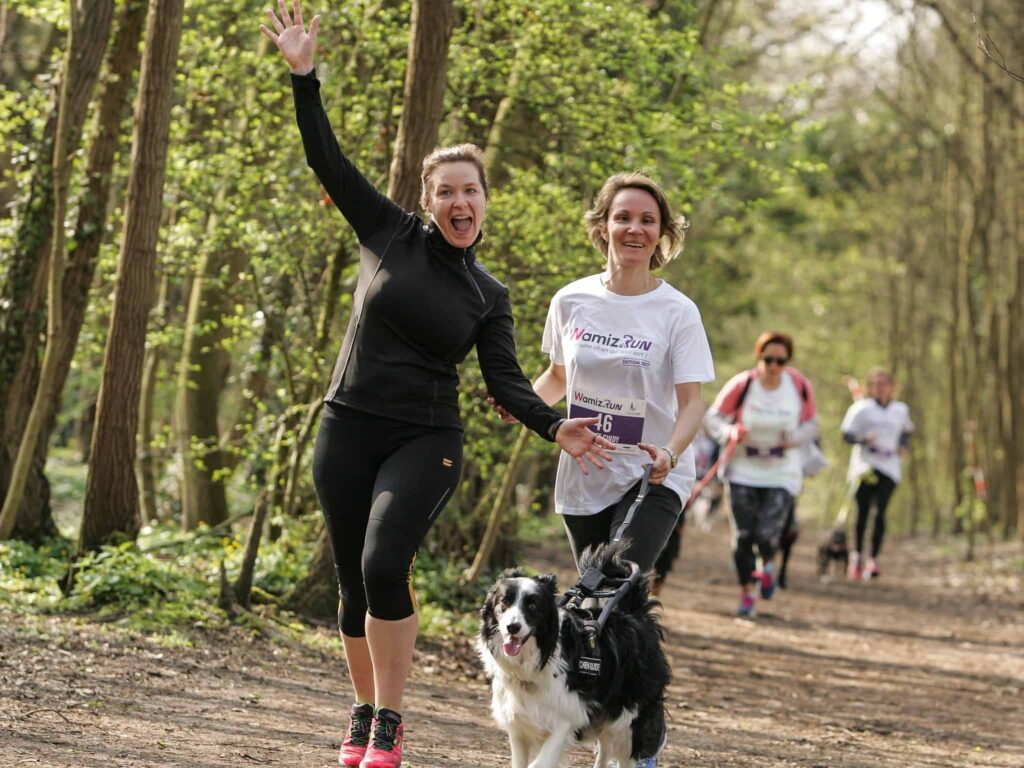
2. Keep Your Dog Running Closer to You
As mentioned above, shorter leashes will help keep your dog running closer to you. Outside of the leash length, consistency in training and repetition help too. Keeping your dog close on a run is a result of effective leash training.
No dog is perfect when starting to run with you so keep in mind that progress is gradual.
Your goal will be to improve the running relationship you have with your dog through time. As with the leash training itself, the more you keep your dog close on a run, the more likely they are to behave through the duration of the run.
One of the main ways to keep your dog close on a run is to STOP running with a retractable leash. These leashes provide too much slack, don’t help teach consistency, and are a thinner material that can actually cut your dog or you if one of you gets wrapped up somehow.
3. Reduce Dog Distractions On a Run
While leash training is the corner-stone to successfully training your dog not to pull on a run, there are other ways to prevent pulling. With so many people, dogs, and bicycles on the trails it is no wonder our dogs end up pulling in every direction imaginable.
Avoid People When Training
Make it easier for your dog to focus on the task at hand, and provide a running environment with reduced distractions. Yes, I am implying you run with your dog in less populated areas, maybe hit the trails when there are less people on them.
Seek Out Wider Trails With Less to Sniff
Outside of avoiding people on your run, you should consider running on a wider trail or path. After all, dogs like to sniff, and while sniffing is typically cool, it doesn’t help you run at a consistent speed. If your dog is slightly larger, or at the very least stronger, a sudden stop to smell a bush could pull you right back on your next step. Ouch!
4. Bring Treats on Your Run for Positive Reinforcement
One of the main methods for training dogs is by rewarding the behavior you want to continue with positive reinforcement. For dogs, what could be a better positive reinforcement other than a treat?
Start the Rewards with Small Feats
Since we are trying to create long-lasting habits it is important we make running with your dog a fun experience for you, but also your dog.
When starting to train your dog on how to run by your side, consider stopping every 100 yards or so to give them a small treat. This can be considered a “thank you” to your dog for not pulling.
The goal of providing treats for your dog is to build positive responses where you want to elicit them. In other words, if you reward your dog for running by your side, it increases the likelihood your dog will continue to do so.
Providing a reward for good trail behavior can start at the beginning of your training efforts when still just walking with your dog.
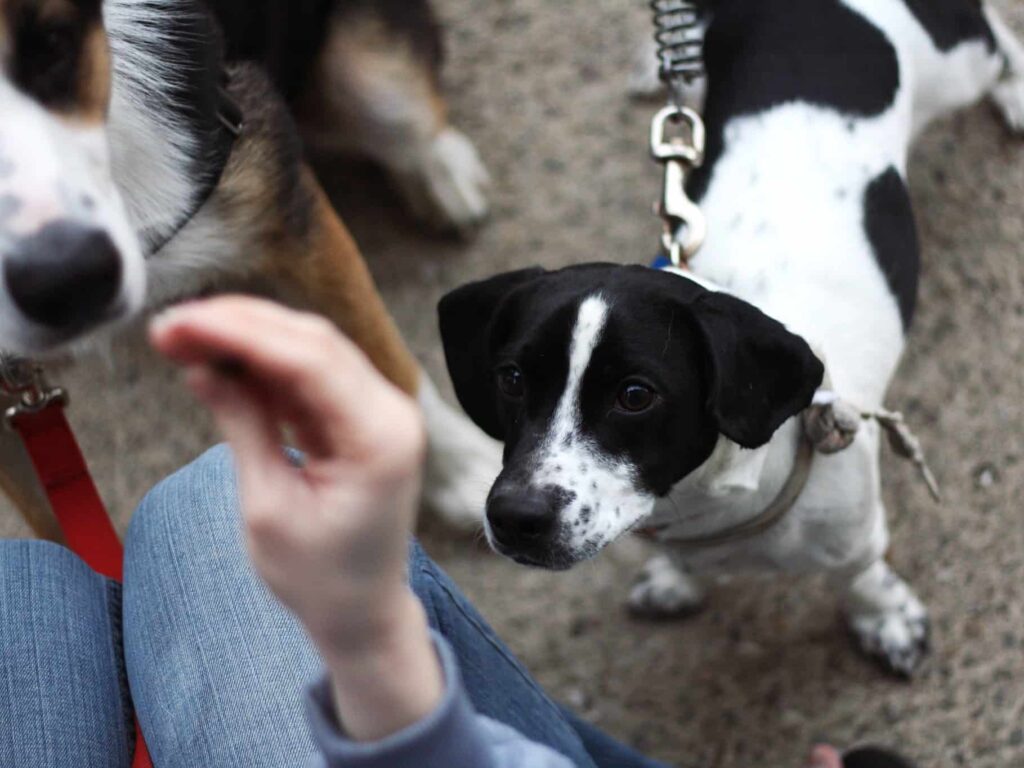
Continue Treat Rewards for Running Success
As the pace picks up a bit, the major tenants of your leash training will hopefully carry over. Habits gained during walks can transfer over to the runs.
Follow a similar treat-regimen as you ease into running. This will further reinforce your training. Just be sure to use small treats so your furry friend’s belly isn’t too full.
You have fought hard every step of the way to train your dog not to pull on the leash, and as their good behavior carries over to runs you should reward your dog.
As your dog continues to adopt the quality attributes of a running companion you can space out the treats to push your dog to achieve further distances between rewards.
5. Harnesses Are Better Than Collars
Furthermore, as we already mentioned leash training plays an important role in your routine. However, the truth is, your leash is only half of the equation.
In fact, having an easy to grasp leash for running makes training and running with your dog easier for YOU. But a harness makes leash training and controlled running easier for you dog.
Don’t get me wrong, we’re not anti-collar, but we know first hand how helpful a harness is for our dog.
There are four main reasons using a harness for a dog that pulls is important:
- When pulling, a harness disperses pressure and reduces neck pain for your dog.
- A harness reduces the likelihood the leash will rotate from the center of your dog’s back on a run.
- A harness makes it easier to put a “full-stop” on your dog during leash training.
- A dog can easily slip out of a collar if they back up or dart in different directions.
There are other reasons why I believe a harness is superior to a collar when running with a dog that pulls, but these three points are the best three that come to mind. Additionally, if you’re heading to the trails, check out our post Trail Running with a Dog.
My Favorite Harness for Running With a Dog That Pulls
There are a lot of dog harnesses on the market, but our favorite is the Chai’s Choice No-Pull Harness. This harness has a narrow front profile reducing chafing on runs, and also includes light padding where dogs that pull typically put pressure on the harness.
Additionally, it is part reflective and is more breathable than comparable harnesses. Plus, it’s available in extra small up to extra large sizes.
Take time to consider how to will help make the running experience more enjoyable for your dog. After all, running together needs to be enjoyable for both of you if it is going to continue with any regularity.
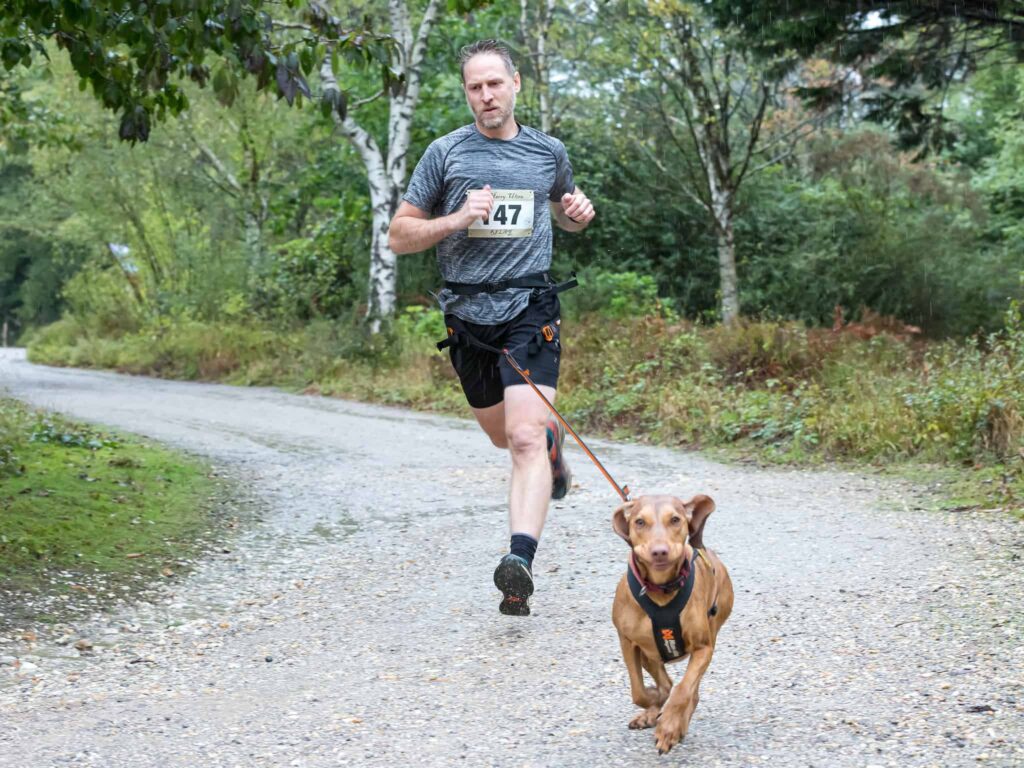
6. Some Breeds do Better than Others
Sadly, some breeds are better suited for running than others. It’s best to keep this info in mind during training.
After all, if you have a breed not well suited to running or training, it will likely be a frustrating process. And it helps to know that you’re doing all you can and you’re not alone.
Below we cover some of the top breeds for running. For instance, an ideal running dog must be easily trainable. Since training is a key part of getting your dog to run without pulling, these dogs make things less frustrating.
The Ideal Running Partners
There are many dog breeds, and there are endless ways you can get your buddy to go on a run with you.
However, there are some breeds that make ideal running partners.
While this list is not exhaustive by any means, here are five dog breeds that tend to manage runs very well, and provide a good starting point when training a dog to run without pulling.
1. Weimaraner
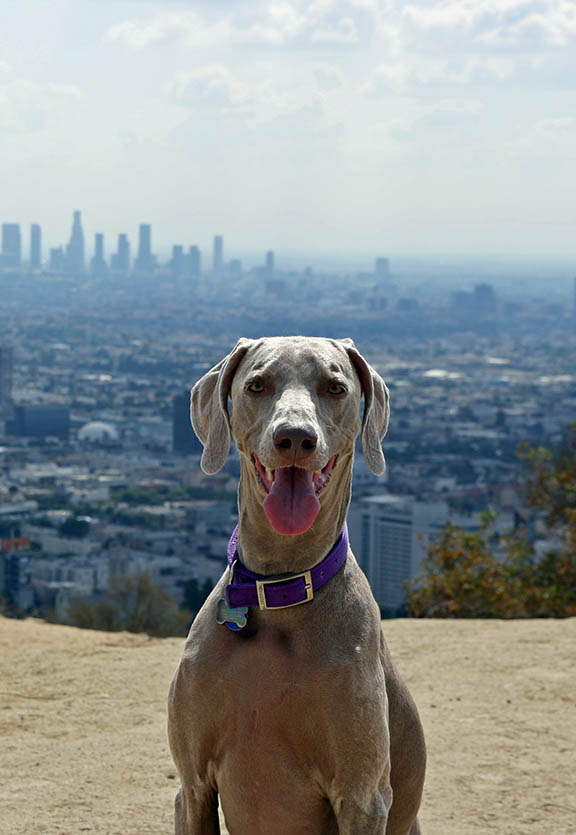
Weimaraner were actually bred to be great hunting companies, and a challenge for deer and bears alike. If this doesn’t sound like a breed that can run I don’t know what does.
Typically weighing between 55 and 85 lbs, and standing about 2 ft. tall at the shoulders the Weimaraner is not so large or small that they tire easily (source).
Finally, the Weimaraner is also relatively easy to train when compared to other dogs. This is ideal when trying to work with a dog that pulls on a run.
2. Dalmation
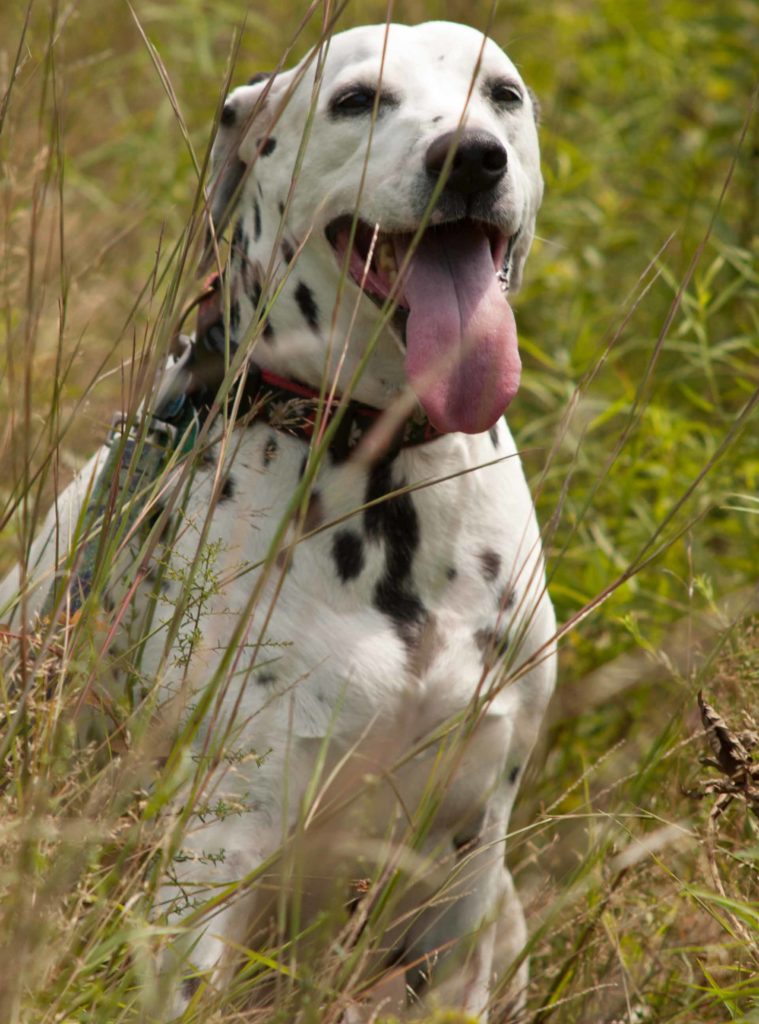
Additionally, while Dalmatians are considered more of a companion breed they’re also good sport dogs. In fact, their body is perfectly tailored to running fast and for long durations.
Weighing in between 48 and 55 lbs and measuring approximately 1 ft. 10 in. at the shoulder, this breed of dog is ready to run (source).
Dalmations are another breed that has proven to be more responsive to leash training than others.
3. Vizsla

The Vizsla breed is another example of a dog with an ideal running body. Outside of its genetics, Vizsla tend to be very open to training. In fact, Vizslas are typically great running partners with leash training.
Vizslas weigh between 45 and 65 lbs, and standing about 1 ft. 10 in tall at the shoulders. They’re built to run and don’t tire easily. In fact, it is likely you tire before the Vizsla will, as this breed of dog is actually considered a Sporting Dog (source).
4. Doberman Pinscher
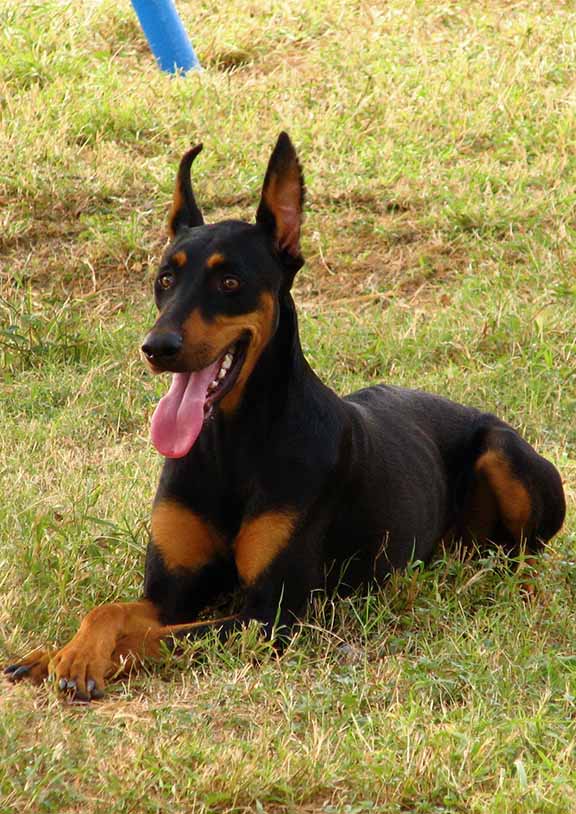
The Doberman Pinscher were bred to be guard dogs. And thus, the build of this breed is extremely athletic and also extremely obedient. Additionally, a Doberman Pinscher that pulls on runs will likely be easy to train against that behavior.
At an average weight of 60 to 80 lbs, and an approximate height to the shoulders of 2 ft. 2 in, this breed can outrun most novice human runners without a problem (source).
5. Belgian Malinois
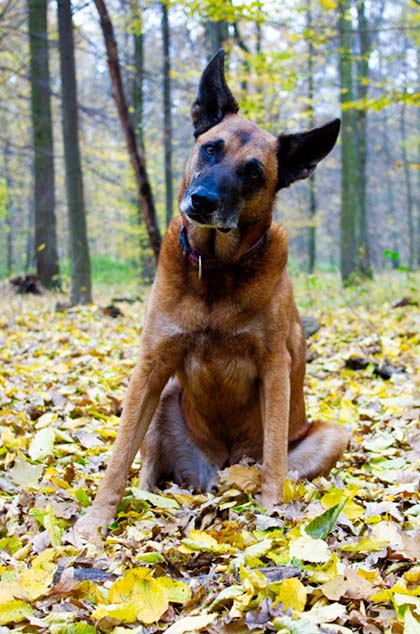
Finally, the Belgian Malinois breed is typically a near-perfect running companion. In fact, they were originally bred for herding. As a result, this breed tends to be very receptive to training, and an obedient companion.
Weighing between 40 and 80 lbs. and measuring about 2 ft. tall to the shoulder the Belgian Malinois are ready to run (source).
Plus, the Belgian Malinois is well suited to running and was bred to cover great distances. Additionally, their receptiveness to training increase the likelihood you will be able to train them not to pull.
Small Breeds Will Struggle With Distance
Not all small dogs struggle running. However, their shorter legs will create some challenges if you plan to run considerable distance.
Plus, there are also a number of small breeds that tend to be more difficult to train against lunging.
There is a Distance Multiplier With Small Breeds
Finally, it is easy to forget that a small dog with short legs expend more energy per stride.
In fact, small breeds require around 12 to 20 strides to cover the same distance humans cover in two running strides.
Now, imagine how many strides that small friend will use over just one mile. Small dogs are going to tire very quickly.
So, if you have a short-legged breed our caution would be to proceed with smaller distances at first to see what they can handle.
Furthermore, you could always do a short run with them. Then drop them off at home and finish your long-distance run solo.
Grab a Harness and a Leash and Start Running
Whether your dog is an easy running companion, or not, there are still many reasons to take your dog on a run. The main reason is that most dogs love running.
Moreso than loving to run, most dogs also love time with you. So, we should do our best to combine the things our dog loves. However, running with a dog that pulls can be dangerous.
Training your dog to not pull so much will help make the process a bit more sustainable for you, too. After all, you need to have an enjoyable stress free run as well.
About the Author
Todd Alexander
RELATED POSTS:
- Best Gifts for Trail Runners
- 14 Crucial Tips for Camping with a Dog in a Tent
- Best Tents for Camping with a Dog
- GPS Watches With The Longest Battery Life
- Best Dog Leashes for Camping
- 5 Ways Road Running Can Improve Your Trail Running
- Best Running Shoes for Heel Strikers
- Best Dog Leashes for Hiking
- What To Wear For a Muddy Trail Run
Title Image Credit, Running With a Dog That Pulls: Timo Waltari | (source) | Attribution 2.0 Generic (CC BY 2.0)
Running With a Dog That Pulls, Image Credit 1: phillips_colin | (source) | Attribution 2.0 Generic (CC BY 2.0)
Image Credit 2, Running With a Dog That Pulls: Wamiz Wamiz | (source) | Public Domain Mark 1.0
Image Credit 3, Running With a Dog That Pulls: Ginny | (source) | Attribution-ShareAlike 2.0 Generic (CC BY-SA 2.0)
Running With a Dog That Pulls, Weimaraner Image Credit: Marc Levin | (source) | Attribution 2.0 Generic (CC BY 2.0)
Dalmation Image Credit, Running With a Dog That Pulls: 6SN7 | (source) | Attribution 2.0 Generic (CC BY 2.0)
Running With a Dog That Pulls, Vizsla Image Credit: Rebecca Siegel | (source) | Attribution 2.0 Generic (CC BY 2.0)
Running With a Dog That Pulls, Doberman Pinscher Image Credit: Pato Garza | (source) | Attribution 2.0 Generic (CC BY 2.0)
Belgium Malinois Image Credit, Running With a Dog That Pulls: Olgierd Rudak | (source) | Attribution 2.0 Generic (CC BY 2.0)


